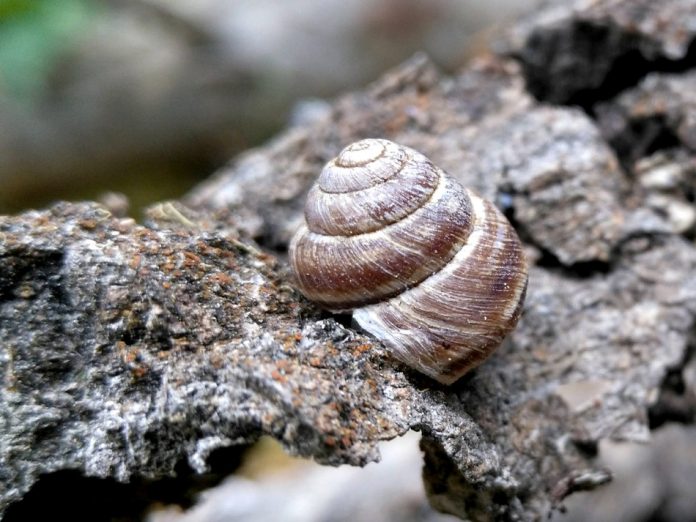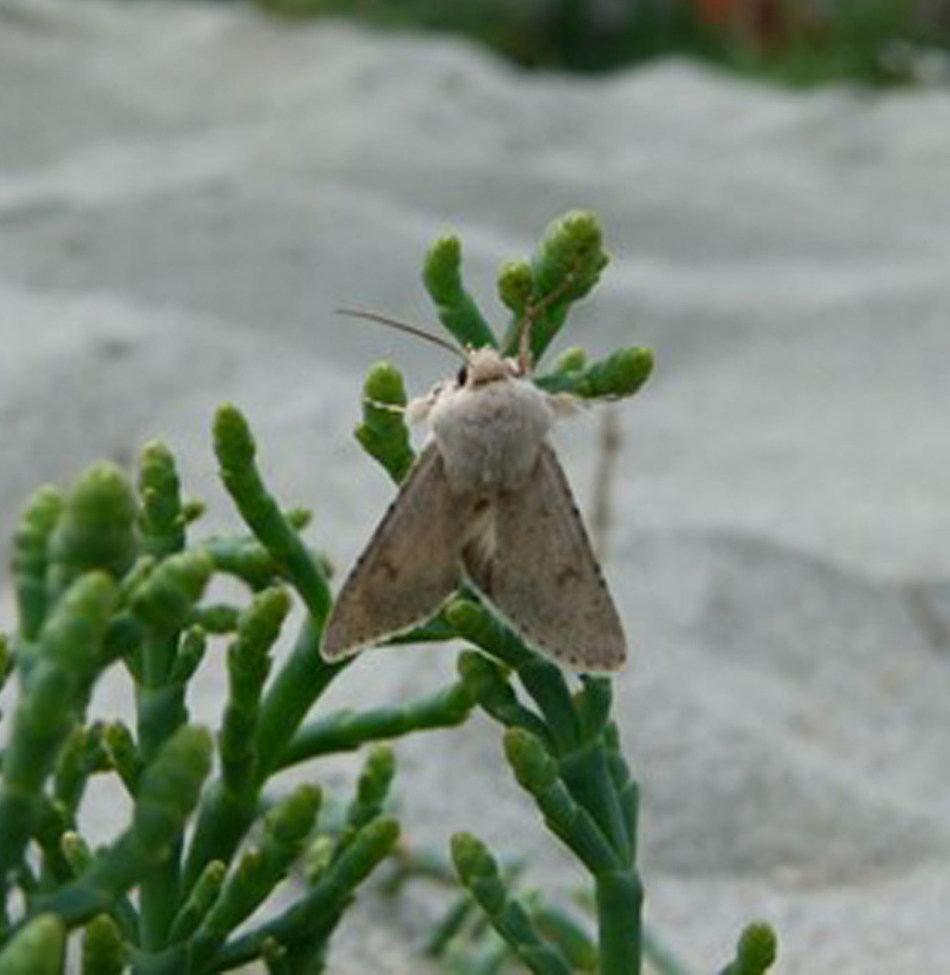
For over a year now, Canadians have been urged to stay home. Sometimes, though, home can not only feel too small, it can be too small. At their most recent virtual meeting, the Committee on the Status of Endangered Wildlife in Canada (COSEWIC) assessed the status of 26 wildlife species, some of which have particularly small spaces to call home. While not all are actually declining, a single stroke of bad luck could eliminate their entire Canadian population. And climate change may bring that bad luck.

Two rare lichens were assessed. Both live in specialised environments, one on the Pacific coast and one on the Atlantic. The tiny Seaside Centipede Lichen occurs on a narrow strip of western Vancouver Island and nearby islands. It occurs only on small Sitka Spruce twigs that are within a few metres of the forest floor. This lichen also needs a nitrogen supply, and so is usually found on trees near Bald Eagle perches and sea lion haul-outs where poop supplies that key nutrient. In Nova Scotia and Newfoundland, Vole Ears Lichen occurs in a few forests near the coast where necessary fog is common. We know more about this rare lichen because of the increased interest of naturalists — the Canadian population is the only one remaining in North America and may number fewer than 2000 individuals.
Increasingly severe storms can damage the lichens and their host trees on both coasts, layered upon local threats. Seaside Centipede Lichen was assessed by COSEWIC as Threatened and Vole Ears Lichen as Endangered.
Black Hills Mountainsnail has been isolated in the Cypress Hills on the Alberta–Saskatchewan border since glaciers covered much of the continent. The Canadian population is one of only four in the world that survived on rare hills or “sky islands” above the ice (the others are in Montana, Wyoming and South Dakota). Climate change-fueled megafires could affect all these Canadian snails in one fell swoop. COSEWIC assessed this snail as Endangered.
“Large wildfires can damage and even wipe out snail populations — they really can’t just run away!” noted Dwayne Lepitzki, Co-chair of the Molluscs Subcommittee. “The Cypress Hills had major fires in the 1880s and we know that wildfires are getting bigger and more common in western Canada. Hopefully, fire management can help protect this snail.”
The attractive Edwards’ Beach Moth is restricted to a few windswept beaches and small dunes around southern Vancouver Island, isolated from populations known in California. Thanks to work by dedicated volunteers, invasive vegetation is being kept at bay. However, climate change is a threat because warming brings rising sea levels and more numerous and intense storms that threaten to destroy the upper beaches and dunes where the moth lives. It was assessed as Endangered.
Fully 15 of the 26 wildlife species assessed by COSEWIC are threatened by climate change. Not all of them have restricted ranges. Short-eared Owl is still widely distributed, but Christmas Bird Count and Breeding Bird Survey volunteers have documented a worrying decline in their numbers.
“Citizen science observers across the continent are fundamentally important in determining population trends for this and many other species,” commented Birds Subcommittee Co-chair Richard Elliot. “We couldn’t do it without them.”
Climate warming in the North is resulting in shrubification of tundra habitat, making it less favourable for the owl, and adding to human impacts it faces further south. Short-eared Owl was assessed as Threatened.
Altogether, COSEWIC assessed 5 birds, 5 plants, 3 insects, 3 reptiles, 3 molluscs, 2 sharks, 2 lichens, 1 amphibian, 1 freshwater fish, and 1 mammal wildlife species. Further details on all the wildlife species assessed at this meeting can be found on the COSEWIC website (https://www.cosewic.ca/). For more information on how COSEWIC assesses species, and a complete list of Canadian wildlife species assessed by COSEWIC up to 2020, please see https://wildlife-species.canada.ca/species-risk-registry/virtual_sara/files/species/CanadianWildlifeSpeciesAtRisk-2020.pdf.

Next meeting
COSEWIC’s next scheduled wildlife species assessment meeting will be held in November 2021.
COSEWIC assesses the status of wild species, subspecies, varieties, or other important units of biological diversity, considered to be at risk in Canada. To do so, COSEWIC uses scientific, Aboriginal traditional and community knowledge provided by experts from governments, academia and other organizations. Summaries of assessments are currently available to the public on the COSEWIC website (https://www.cosewic.ca/) and will be submitted to the Federal Minister of the Environment and Climate Change in fall 2021 for listing consideration under the Species at Risk Act (SARA). At that time, the status reports and status appraisal summaries will be publicly available on the Species at Risk Public Registry (https://www.canada.ca/en/environment-climate-change/services/species-risk-public-registry.html)
At its most recent meeting, COSEWIC assessed 26 wildlife species in various COSEWIC risk categories, including 7 Endangered, 9 Threatened, and 10 Special Concern.
COSEWIC comprises members from each provincial and territorial government wildlife agency, four federal entities (Canadian Wildlife Service, Parks Canada Agency, Fisheries and Oceans Canada, and the Canadian Museum of Nature), three Non-government Science Members, and the Co-chairs of the Species Specialist and the Aboriginal Traditional Knowledge Subcommittees.
Definition of COSEWIC terms and status categories:
Wildlife Species: A species, subspecies, variety, or geographically or genetically distinct population of animal, plant or other organism, other than a bacterium or virus, that is wild by nature and is either native to Canada or has extended its range into Canada without human intervention and has been present in Canada for at least 50 years.
Extinct (X): A wildlife species that no longer exists.
Extirpated (XT): A wildlife species that no longer exists in the wild in Canada, but exists elsewhere.
Endangered (E): A wildlife species facing imminent extirpation or extinction.
Threatened (T): A wildlife species that is likely to become Endangered if nothing is done to reverse the factors leading to its extirpation or extinction.
Special Concern (SC): A wildlife species that may become Threatened or Endangered because of a combination of biological characteristics and identified threats.
Not at Risk (NAR): A wildlife species that has been evaluated and found to be not at risk of extinction given the current circumstances.
Data Deficient (DD): A category that applies when the available information is insufficient (a) to resolve a wildlife species’ eligibility for assessment or (b) to permit an assessment of the wildlife species’ risk of extinction.
Species at Risk: A wildlife species that has been assessed as Extirpated, Endangered, Threatened or Special Concern.
|
Dr. John Reynolds
Department of Biological Sciences Simon Fraser University Telephone: 778-782-5636 Reynolds@sfu.ca
|
For general inquiries:
COSEWIC Secretariat Canadian Wildlife Service Environment and Climate Change Canada 351 St. Joseph Blvd, 16th floor Gatineau QC K1A 0H3 ec.cosepac-cosewic.ec@canada.ca
https://www.cosewic.ca/
|
|
For inquiries on Amphibians & Reptiles (Coeur d’Alene Salamander, Common Five-lined Skink, Eastern Hog-nosed Snake):
Dr. Tom Herman Acadia University Telephone: 902-670-3535 |
For inquiries on arthropods (Cobblestone Tiger Beetle, Edwards’ Beach Moth, Grappletail):
Dr. David McCorquodale Cape Breton University Telephone: 902-574-1547 |
|
For inquiries on birds (Band-tailed Pigeon, Barn Swallow, Ferruginous Hawk, Ross’s Gull, Short-eared Owl):
Dr. Marcel Gahbauer Telephone: 343-809-2757
|
For inquiries on freshwater fishes (Lake Chubsucker)
Dr. Nicholas E. Mandrak University of Toronto Scarborough Telephone: 416-208-2248
|
|
For inquiries on lichens (Seaside Centipede Lichen, Vole Ears Lichen):
Dr. David H. S. Richardson Saint Mary’s University Telephone: 902-422-4979 |
For inquiries on marine fishes
Dr. Bruce Leaman Telephone: 250-510-3625 |
|
For inquiries on molluscs (Atlantic Mud-piddock, Black Hills Mountainsnail, Purple Wartyback):
Dr. Dwayne Lepitzki Telephone: 403-762-0864 |
For inquiries on terrestrial mammals (Swift Fox):
Dr. Stephen D. Petersen Assiniboine Park Zoo Telephone: 204-927-6090 |
|
For inquiries on plants (American Water-willow, Coastal Wood Fern, Kentucky Coffee-tree, Lakeside Daisy, Western Silvery Aster):
Del Meidinger Meidinger Ecological Consultants Ltd. Telephone: 250-881-1180 Telephone: 778-977-1180
|
For inquiries on Aboriginal Traditional Knowledge:
Roger Gallant Telephone: 709-638-4343 rgallant@gallantenvironmental.com
|
SOURCE Committee on the Status of Endangered Wildlife in Canada







